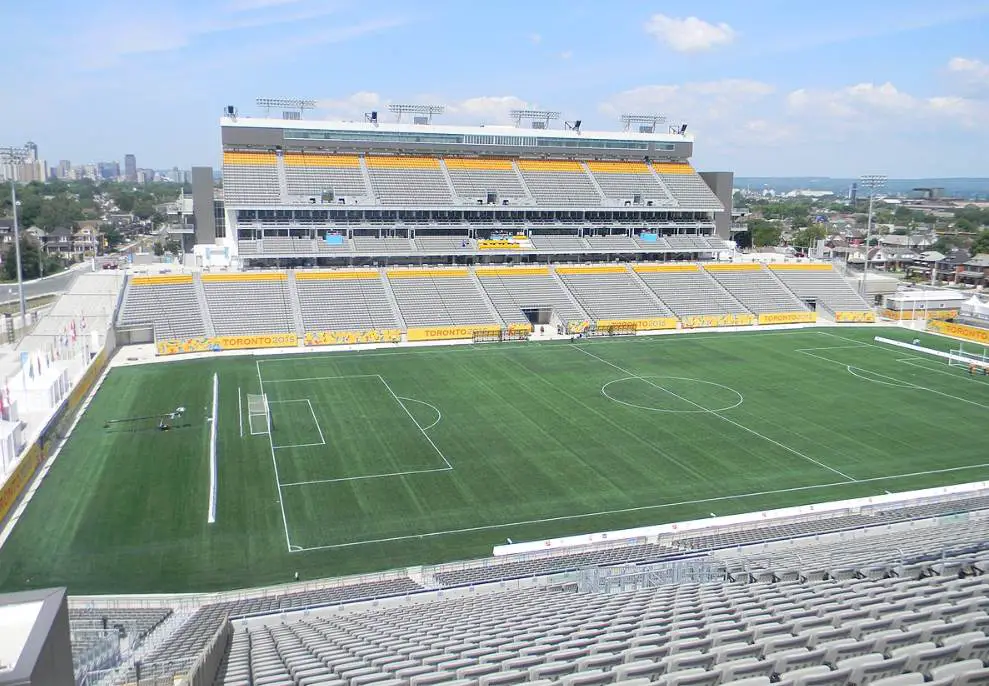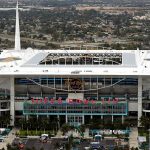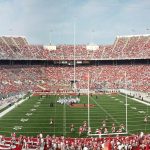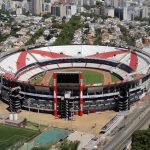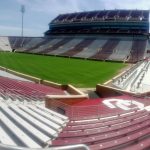Canada is a huge country north of the United States and has an extensive history when it comes to sports.
The first organized competitions date back to the 1840s, although various sports have been played recreationally in the country since the 1770s.
As a cold country, it’s not surprising that ice hockey is one of the national sports in Canada. The other is lacrosse, a sport that became increasingly popular around the mid-18th century.
What’s fascinating is that many Canadian sports teams compete in major professional sports leagues in the United States. This includes 7 hockey Teams, 3 soccer teams, and one baseball and basketball team.
Canada also has its own game called Canadian football, a variation of American football. Most of the largest stadiums in Canada are used by teams competing in the CFL (Canadian Football League).
Without further ado, here are the biggest stadiums in Canada!
1. Commonwealth Stadium
- Location: Edmonton, Alberta
- Capacity: 56,302
Commonwealth Stadium is the home of two Canadian football teams, the Edmonton Eskimos and the Edmonton Elks. It’s the largest stadium in Canada by seating capacity that is used for a wide variety of purposes. Apart from Canadian football, it’s also the home of the Canadian national soccer team.
The stadium was constructed as the main venue of the Commonwealth Games in 1978 and was expanded just 5 years later for the 1983 Summer Universiade. It was modernized and slightly reduced in seating capacity during a renovation phase that cost $112 million and was completed in 2012.
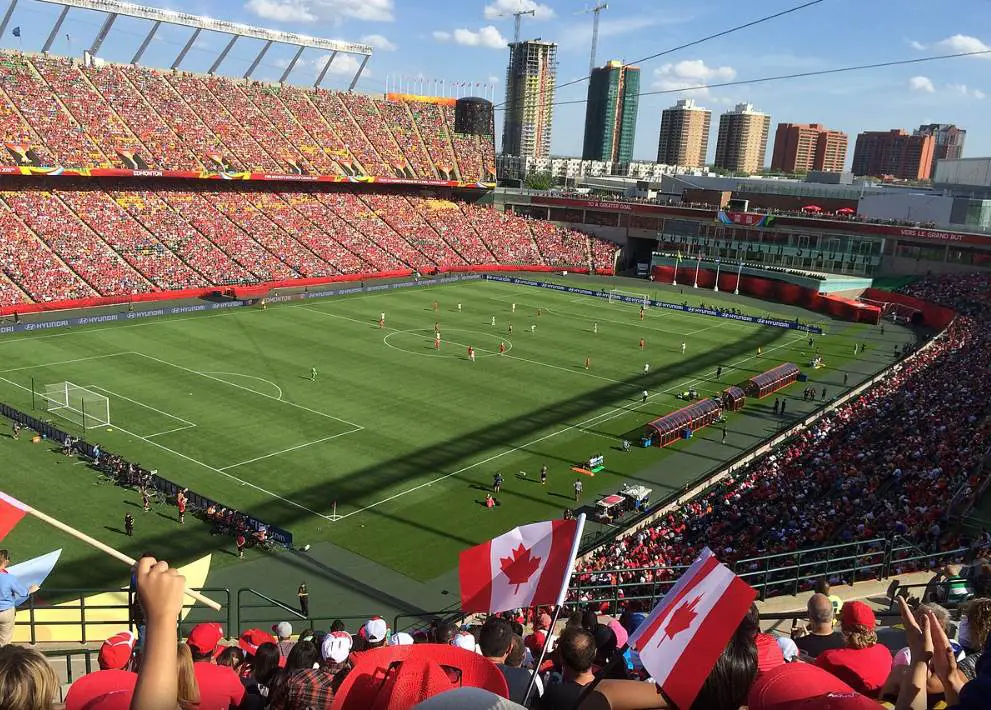
2. Olympic Stadium
- Location: Montreal, Quebec
- Capacity: 56,040
Olympic Stadium in Montreal is an absolute architectural marvel and the centerpiece of Olympic Park. As the name suggests, it was constructed in the 1970s to serve as the main venue of the 1976 Summer Olympics that were held in Montreal that year.
The most amazing feature of the stadium is its doughnut-shaped roof. This has earned the stadium the nickname “The Big O.” The stadium is adjoined by several other sports complexes that were used during the Olympics. The mocking nickname “The Big Owe” is a reference to the high cost of C$ 770 million to build the stadium.
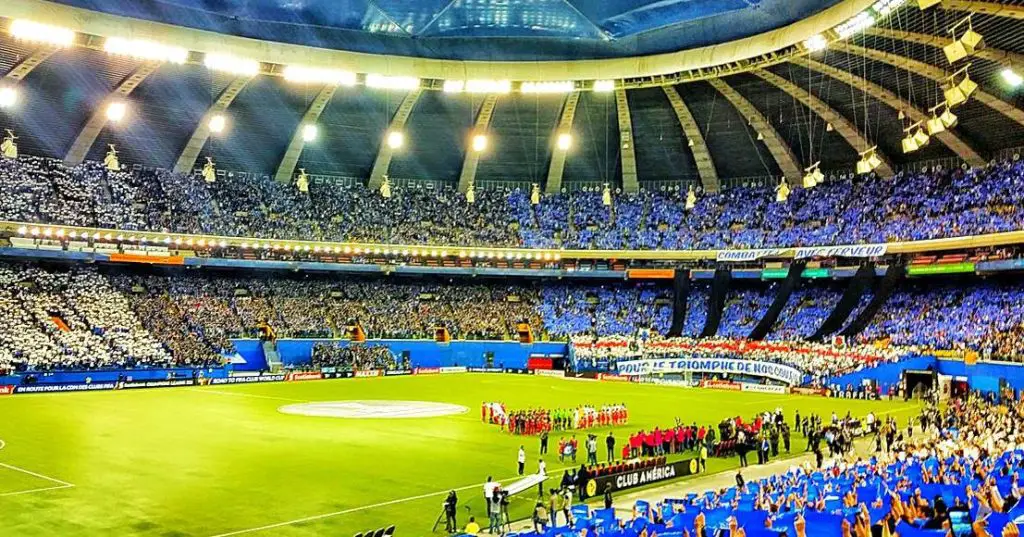
3. BC Place
- Location: Vancouver, British Columbia
- Capacity: 54,500
BC Place is another fantastic stadium in Canada located just north of False Creek, a relatively small inlet in the heart of Vancouver. The stadium is owned by the BC Pavilion Corporation, a state-owned multi-purpose crown corporation after which the stadium was named.
The stadium is the home of two sports teams, the BC Lions of the Canadian Football League (CFL) and the Vancouver Whitecaps FC of Major League Soccer (MLS). It also hosts the Canada Sevens which is part of the World Rugby Sevens Series. The stadium was completed between 1981 and 1983 and completely renovated between 2009 and 2011.
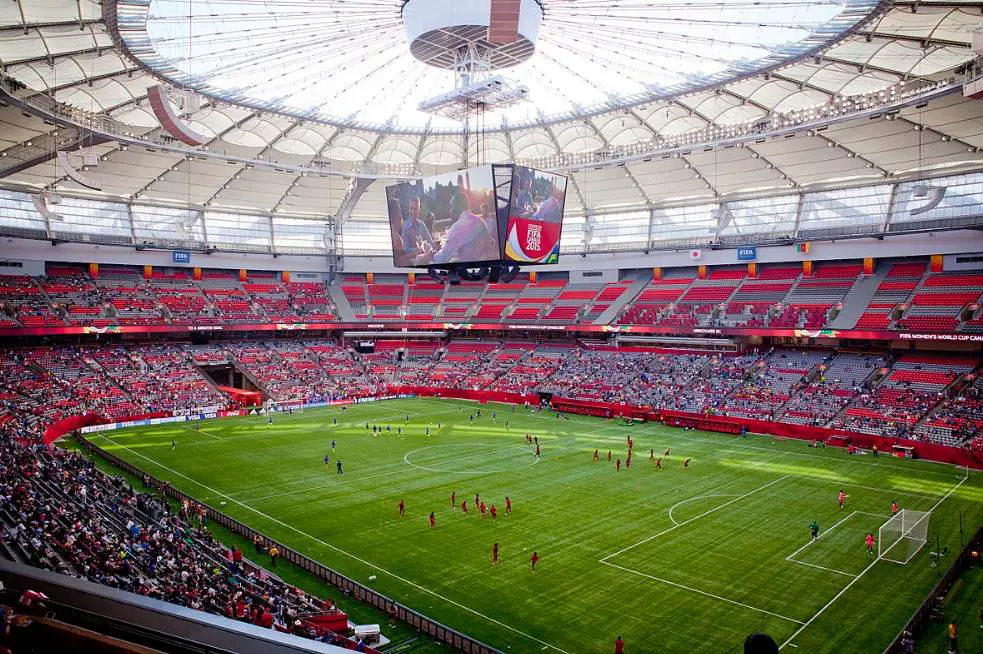
4. Rogers Centre
- Location: Toronto, Ontario
- Capacity: 49,282
Rogers Centre isn’t just one of the biggest stadiums in Canada, it’s also one of the most stunning ballparks in the world. It’s located in downtown Toronto, right next to the most famous landmark in the city, the CN Tower. The most amazing feature of the stadium is its retractable roof.
The stadium is the home of the Toronto Blue Jays baseball team, the only Canadian team that competes in Major League Baseball (MLB). The stadium was acquired by Rogers Communications in 2005. This company gave its name to the stadium and it also owns the Toronto Blue Jays.

5. McMahon Stadium
- Location: Calgary, Alberta
- Capacity: 35,400
McMahon Stadium is a remarkable stadium in Canada because it’s owned by the University of Calgary. It’s located in between downtown Calgary and the University of Calgary and has been the home of the Calgary Stampeders Canadian football team since it was opened in 1960.
The stadium has undergone several expansions throughout its history, including in 1969, 1973, 1975, and 1988. It was renovated a couple of times more in 2001 and 2005. Temporary bleachers were placed at the stadium in 1988 as well as it served as the venue of the 1988 Winter Olympics opening ceremony. This event was attended by 60,000 spectators.
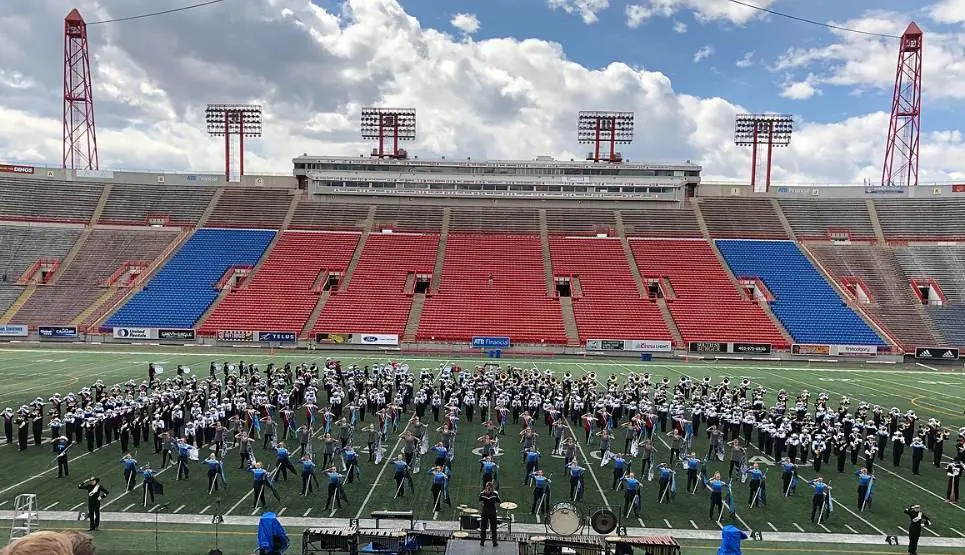
6. Mosaic Stadium
- Location: Regina, Saskatchewan
- Capacity: 33,350
Mosaic Stadium is a stunning new stadium that is located in the REAL district of Regina, the capital city of Canada’s Saskatchewan province. It was completed between 2014 and 2017 at a cost of $278 million and serves as the home venue of the Saskatchewan Roughriders Canadian football team.
The stadium was constructed on the location of the former Mosaic Stadium at Taylor Field, a stadium that opened in 193 and that could seat 33,427 spectators before being demolished in 2016-2017. The Roughriders have played in the stadium since 2017 and the fans can enjoy the games in an ultra-modern sports temple.
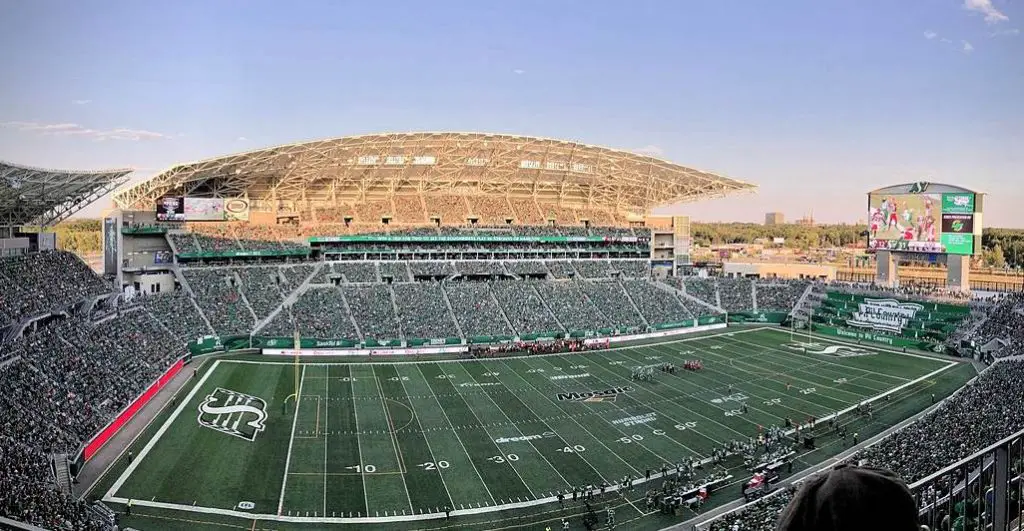
7. IG Field
- Location: Winnipeg, Manitoba
- Capacity: 33,134
IG Field was originally known as Investors Group Field and is another fairly new stadium in Winnipeg, the capital city of the Canadian province of Manitoba. It was constructed between 2010 and 2013 for $210 million and is the home of the Winnipeg Blue Bombers Canadian football team and the Valour FC soccer team.
What’s remarkable about IG Field is that its located on the campus of the University of Manitoba in the southern part of Winnipeg. The stadium is frequently used for important soccer games as well and served as one of the venues of the 2015 FIFA Women’s World Cup. Concerts and ice hockey games can be held at the stadium as well.
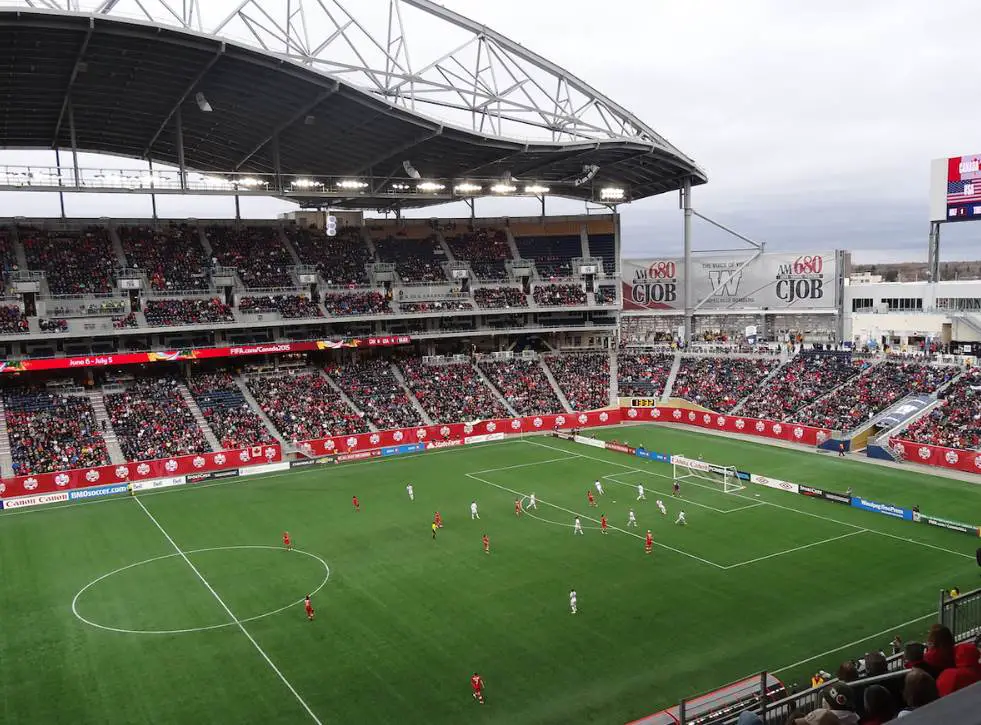
8. BMO Field
- Location: Toronto, Ontario
- Capacity: 30,000
BMO Field is another stunning stadium in Toronto, the most populous city in Canada. It’s located at Exhibition Place, a district that border the shoreline of Lake Ontario just west of downtown Toronto. It’s the home venue of both Toronto FC, a soccer team that competes in the MLS, and the Toronto Argonauts of the CFL.
The stadium was completed between 2006 and 2007 for C$62.9 million and expanded twice shortly after in 2010 and 2014-2016. The final expansion phase added an upper deck to one of the main stands and distinctive roofs above all the seating areas. It’s another multi-purpose stadium that is used for concerts, ice hockey, rugby, and lacrosse.
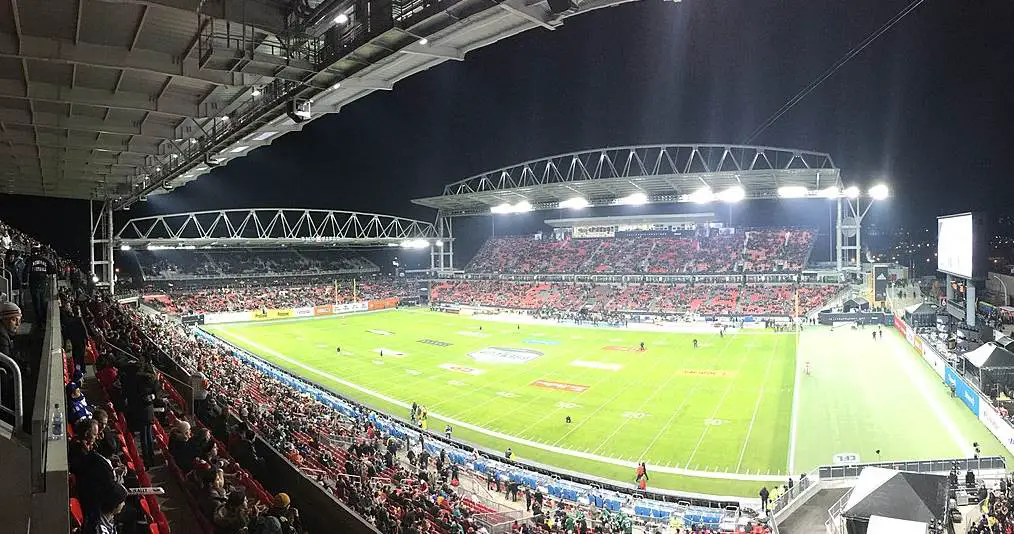
9. TD Place Stadium
- Location: Ottawa, Ontario
- Capacity: 24,000
TD Place Stadium was formerly known as Lansdowne Park and Frank Clair Stadium. It’s located inside Lansdowne Park just south of downtown Ottawa. The stadium is the home of the Ottawa Redblacks Canadian football team and the Atlético Ottawa soccer team which competed in the Canadian Premier League.
The stadium has an extended history that dates back to the late 19th century. The first grandstand in this location was constructed in 1908. By the 1990s, the stadium was threatened with demolition and it wasn’t until the 21st century that it was renovated. This project was completed in 2014 after the original stands were demolished a couple of years earlier.
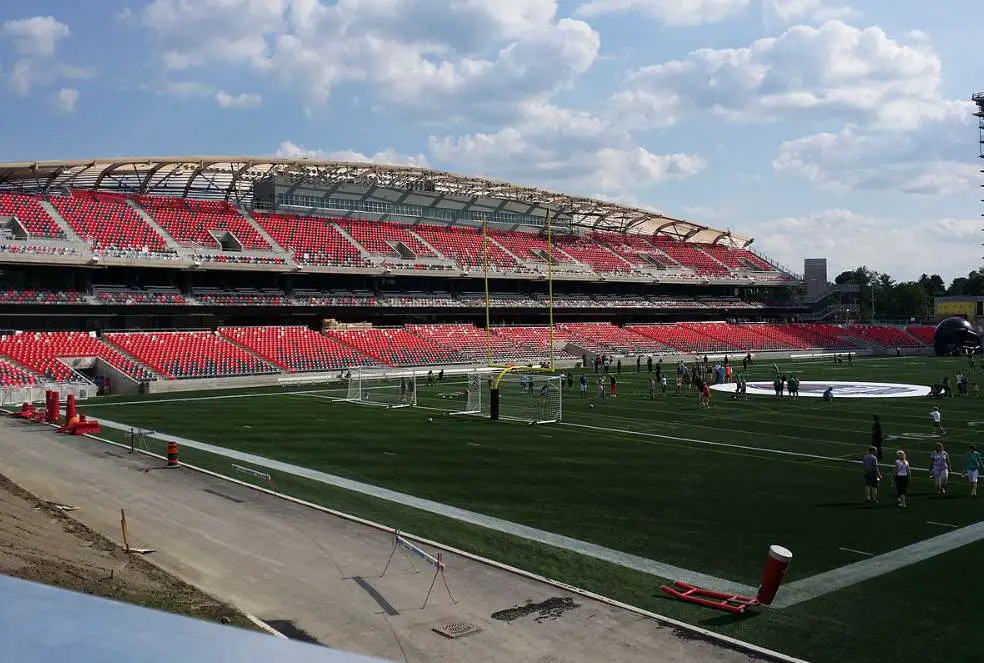
10. Tim Hortons Field
- Location: Hamilton, Ontario
- Capacity: 23,218
Tim Hortons Field is a multi-purpose stadium in Hamilton, a port city in Ontario. It has a peculiar nickname as it’s commonly referred to as “The Donut Box.” The stadium was constructed between 2012 and 2014 for $145.7 million. It was named as such after Tim Hortons, a Canadian restaurant chain, had acquired the naming rights in 2014.
The stadium is the home of the Hamilton Tiger-Cats Canadian football team and replaced the former Ivor Wynne Stadium, a stadium that had served as the home of the team since 1950. The old stadium was demolished to make way for a completely modernized version.
